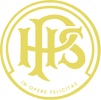EOTC
| Staff Handbook | ||
|---|---|---|
| Introduction | Staff facilities | General | What to do in a fire or Earthquake | Care of sick or injured students | Crisis Proceedure |  |
| Systems | Detentions | Uniform | Attendance | Smoking | Referral process | Serious student offending | Assessment in senior school | |
| Student Support | Guidance | Discipline | Code of behaviour | |
| Staff | Duty | Minibuses | Use of facilities | Misc | EOTC | Appraisal | |
EOTC
All EOTC activities need to be approved by the EOTC Committee. This should be presented at the end of the year prior to the trip date. It is a requirement that any person(s) taking a trip involving Papanui High School student(s) outside the school grounds complete the appropriate documentation.
Trips will either be classed as Low Risk or High Risk.
LOW RISK ACTIVITIES: (for single period or low risk day trips) eg to the Art Gallery. HIGH RISK ACTIVITIES :eg Over night cultural or sports trips, all outdoor education trips, field trips to high-risk areas.
Step One - is the completion of the EOTC Activity planner relevant to the risk. This documentation is in paper form in the staff workroom as well as being available on the computer network.
All the relevant forms, information and procedures can be found on G drive. Go to “My Computer”, find G drive (staff on Papanui_hs\user\pool’[G;]). There you will find icons representing:
- Examples ⇒ Kimi Ora, Craigieburn, skiing, YMCA etc
- High Risk Activity ⇒ Proposal form, letter home template, permission/medical forms, RAMS template, student profile, trip planning checklist etc.
- Low Risk Activity ⇒ similar but relevant forms.
- Other Forms ⇒ allowance claim form, environment centre booking sheet, student vehicle pass, senior students assessment acknowledgment form.
Go to the relevant place and retrieve the forms you need. Follow all instructions carefully. Remember to leave the right in the right places.
All trips (curricular or co-curricular) which cut across classes other than your own must have the approval of the relevant HOD and the EOTC Committee.
All EOTC documentation must be presented to the senior manager ic of EOTCat least 5 days beforehand.
A budget may also be required. Staff may use their own formats for budgets. eg spreadsheet, table etc.
For some activities you may also have to complete:
- programme schedule
- student vehicle/passenger permission form
- agreement with outside providers
- EOTC staff allowance claim form.
NOTE: It is the aim of the committee for EOTC to be as simple and as painless as possible. Please ask for assistance in completing any aspect of planning a trip.
STAFFING GUIDELINES
The following staff/activity leader guidelines should be followed:
- It is important that national body guidelines and codes of practices are followed for appropriate activities, particularly outdoor recreation type activities, in regard to safety management. Theses national bodies include but are not limited to NZMSC, NZOIA and NZCA. Activity leaders holding appropriate qualifications will help to ensure these guidelines and current practices are being followed.
- The activity leader should hold the relevant qualifications for that activity or sufficient experience to warrant competence.
- Staff assisting should be competent and have relevant experience.
- For activities where no formal qualifications apply the activity leader should be competent and have relevant experience.
- A person with an up-to-date First Aid qualification should be on every high-risk and/or overnight trip.
- It is preferable for activity leaders to have risk management training.
- The use of alcohol and/or illicit substances is not permitted on any Papanui High School trip by students. It is generally inappropriate for staff to drink alcohol while on a school trip. There may be occasional situations where it is appropriate for staff to consume alcohol in moderation. These need to be discussed with the EOTC co-ordinator/Principal.
- Males and females will sleep in separate accommodations (rooms) where ever possible.
- Appropriate school rules will apply for all trips.
Ratios It is advised that wherever possible at least two staff or competent adults are on each EOTC activity. These need to be followed as closely as is practicable.
- Kayaking and high risk water based activity 1 : 4
- Rock climbing/abseiling 1 : 6/8
- Tramping 1 : 8
- Class trips/camps (high risk) 1 : 8
- Class trips/camp (low risk) 1 : 14
- Study trips 1 : 14